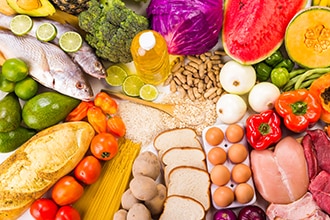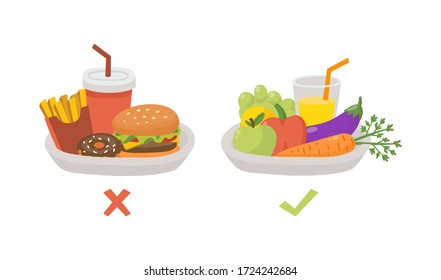
Diabetic can find a wide variety of foods, so it is important that you choose healthy foods that suit your lifestyle and individual needs. For controlling blood sugar levels, it is important to eat a balanced meal. Legumes are rich sources of protein and fiber as well high-quality carbohydrates. Soluble fibre helps to stabilize blood sugar levels and curb hunger. Recent research found that eating legumes decreased type 2 diabetes risk and helped to control blood sugar levels.
As a low-carb food, avocados are a great choice for diabetics. Avocados are high in healthy fiber and healthy healthy fats. Walnuts contain high levels of omega-3s which is a plus for diabetics. You should only eat one serving of walnuts. Chickpeas is another legume that is high in protein and fiber. Chickpeas are high in protein and can be eaten as a snack. They also contain large amounts of dietary fiber.
While most people don't like the taste of spinach, pumpkin contains beta-carotene, which converts to essential vitamin A. Pumpkins are rich in beta-carotene and should be served as a main starch. Mixing the skin with other vegetables can provide fiber if you're unable to eat them. They can be prepared and eaten as part of your meal. You can add a spoonful of quinoa to your favorite soup or smoothie for an extra boost in protein.

Greek yogurt can also be enjoyed by diabetics as a snack. Greek yogurt is safe for breakfast or snack as it only contains six to eight g of starchy vegetables. Just make sure to check the label carefully as some brands may contain added sugar. A yogurt is fine, but you can also eat fruit in moderation (berries and cherries included). Flax seeds are rich in lignans which can help increase insulin sensitivity and lower the risk of developing heart disease.
Sweet potatoes are high in potassium and fiber, as well as lean protein. They can be eaten raw or cooked as a snack. Sweet potatoes are a good side dish for lean protein or vegetables, even though they are high in carbs. They are also a good source magnesium, which can help prevent strokes and lower diabetes risk. They are therefore the best food for diabetics.
Many fruits and vegetables have high levels of antioxidants. They are also a good source to fiber. They can be used in salads and smoothies and are low in glycemic index. Greek yogurt is another option. They can also be added to your favorite yogurt. These can be used in smoothies. These can be used to enhance the flavor of desserts when you prepare fruit salads.
Diabetic diets have to be balanced. Diabetic patients should eat foods that are low in sugar but not high in saturated fats or transfats. Instead of fat, they should be rich in fiber, protein, and fiber. A diabetic diet should consist of whole grains and fruits. Healthy fats are also important. These foods can provide you with the health benefits.

For diabetics, a healthy diet includes lots of fruits and veggies. Fruits and vegetables that are fresh, ripe, and organic are the best. Low-calorie foods should be considered the best food for diabetics. There are many options for incorporating fruits and veggies into your daily schedule. For instance, you could eat nuts every morning. These can be delicious and healthy foods for diabetics. For diabetes prevention, you need to be aware of your sugar intake.
Greek yogurt is another healthy option for diabetics. It is high-fiber and very low in carbohydrates. It can be enjoyed either as a snack nor as a main dish. You can also include whole grains. They contain low-calorie and high-fiber foods. For example, whole-grain breads are the best foods for diabetics because they are low-sugar. These breads as well as pastas are a great source of fiber.
FAQ
What are 10 healthy behaviors?
-
Get breakfast every morning.
-
Don't skip meals.
-
Keep a balanced diet.
-
Get lots of water.
-
Take care your body.
-
Get enough sleep.
-
Avoid junk food.
-
Get at least one form of exercise each day.
-
Have fun
-
Make new friends
How often should I exercise?
A healthy lifestyle requires regular exercise. However, there isn't a set amount of time you must spend working out. It is important to find something that you enjoy and stay with it.
When you exercise three times per week, aim for 20-30 minutes moderate intensity. Moderate intensity means you'll still be breathing hard after you've finished. This type workout burns about 300 calories.
If you prefer to walk, go for 10 minute walks four days a week. Walking is low in impact and easy for your joints.
Jogging for 15 minutes three days a week is a good option if you prefer to run. Running can help you burn calories and to tone your muscles.
You can start slow if you're new to exercise. Begin with 5 minutes of cardio every other day. Gradually increase the duration until you reach your goal.
Is cold a sign of a weak immune response?
Cold causes a decrease in immune system strength. This is because white blood cells are less effective at fighting infection. You will feel less pain if you are cold.
How do I count calories?
You may be wondering "what is the best diet for you?" or "is counting calories necessary?" Well, the answer depends on several factors including your current health status, your personal goals, your preferences, and your overall lifestyle.
The Best Diet for me - Which One Is Right for You?
The best diet depends on me, my health, my goals, my preferences and my overall lifestyle. There are many options, both good and bad. Some diets work for some people, while others are not. What can I do to make the right choice? How do I make the right decision?
These are the questions that this article attempts to answer. The article starts by introducing the many types of diets currently available. The pros and cons of each diet are then discussed. Finally, we'll discuss which one is best.
Let's start by taking a look at the various types of diets.
Diet Types
There are three types of diets available: ketogenic, high-protein, and low fat. Let's talk about them briefly.
Low Fat Diets
A low-fat diet is one that limits the intake of fats. This is achieved through reducing intakes of saturated fats (butter and cream cheese, for example). You can replace them with unsaturated oils (olive oil and avocados) Low fat diets are often recommended to those who wish to lose weight quickly. However, this kind of diet may cause problems such as constipation, heartburn, and indigestion. It can also lead to vitamin deficiencies, if someone doesn't get enough vitamins in their food.
High Protein Diets
High protein diets reduce carbohydrates to favor of proteins. These diets usually have higher amounts of protein than other diets. These diets can help increase muscle mass and decrease calories. The downside is that they may not provide adequate nutrition for someone who needs to eat regularly. They may also be too restrictive and not suitable for everyone.
Ketogenic Diets
Also known as keto diets, ketogenic diets are also called keto diets. They are high in fat, moderately high in protein and low in carbohydrates. They are typically used by athletes and bodybuilders because they allow them to train harder and longer without getting tired. You must adhere to all side effects, including fatigue, headaches, nausea and headaches.
How can I control my blood pressure?
It is important to first understand what high blood pressure is. Next, you will need to determine what is causing high blood pressure. This could mean eating less salt, losing some weight, taking medication, and so on.
Also, make sure to get enough exercise. If you don't have time for regular exercise, then try walking as often as possible.
You should join a gym if you are unhappy with your exercise routine. You'll probably want to join a gym where there are other people who share your goals. It is easier to adhere to a fitness routine when someone else will be there with you.
Why does our weight change as we get older?
How do you know if your bodyweight changes?
When there is more muscle mass than fat, weight loss can occur. This means that calories must be consumed at a rate greater than energy. Low activity levels are the most common cause for weight loss. Others include pregnancy, hormonal imbalances or certain medications. When there is more fat than muscles, it's called weight gain. It occurs when people eat more calories than what they use in a given day. Overeating, increased physical activity and hormonal changes are all common reasons.
The primary reason we lose weight is that we consume less calories than what we burn. The main reason we lose weight is because we exercise more often. This increases our metabolism rate and burns more calories each day. This doesn't necessarily mean we will lose weight. What matters is whether we are losing fat or building muscle. If we are burning more calories than what we eat, then we will lose weight. But, if we consume far more calories than what we burn, then we actually store them as fat.
As we age we tend to be slower in moving and thus we don't move nearly as much. We also tend eat less than we used to. As a result, we gain weight. On the flip side, we tend to have more muscle mass so we look bigger than we really are.
If you don't weigh yourself every week, it's impossible to determine how much weight has been lost. There are many ways you can measure your weight. You can also measure your waist, hips or thighs. Some people prefer to use bathroom scales while others like to use tape measures.
You can track your progress by weighing yourself at least once per week and measuring your waistline every month. To see how far you have come, you can take photos of yourself every few month.
You can also look up your height, weight and body measurements online to determine how much you weigh. You'd likely weigh 180 pounds if you were 5'10 tall and 180 pounds if you were 180lbs.
Statistics
- This article received 11 testimonials and 86% of readers who voted found it helpful, earning it our reader-approved status. (wikihow.com)
- WHO recommends reducing saturated fats to less than 10% of total energy intake; reducing trans-fats to less than 1% of total energy intake; and replacing both saturated fats and trans-fats to unsaturated fats. (who.int)
- Extra virgin olive oil may benefit heart health, as people who consume it have a lower risk for dying from heart attacks and strokes according to some evidence (57Trusted Source (healthline.com)
- In both adults and children, the intake of free sugars should be reduced to less than 10% of total energy intake. (who.int)
External Links
How To
What does "vitamin" actually mean?
Vitamins are organic compounds naturally found in food. Vitamins are necessary for us to absorb nutrients in the foods we consume. Vitamins cannot be made by the body; they must be taken from food.
There are two types of vitamins: water soluble and fat soluble. Water soluble vitamins dissolve easily in water. Vitamin C,B1(thiamine), B2 (2riboflavin), and B3 (3niacin), as well as vitamin C,B1, B2 (riboflavin), and B3 (niacin), vitamin B6 (pyridoxine), vitamin folic acid (biotin), pantothenic, and choline are examples. Fat-soluble vitamins can be stored in the liver or in fatty tissue. Some examples include vitamin D and E, K, A and beta carotene.
Vitamins are classified according to their biological activity. There are eight major categories of vitamins.
-
A - vital for healthy growth.
-
C - vital for proper nerve function, and energy production.
-
D - Essential for healthy teeth and bones.
-
E is required for good vision and reproduction.
-
K - required for healthy muscles and nerves.
-
P - vital for building strong bones andteeth.
-
Q - Aids digestion and iron absorption
-
R – Required for the formation of red blood vessels.
The recommended daily allowance for vitamins (RDA) varies based on gender, age, and physical conditions. The U.S. Food and Drug Administration has established the RDA values.
For adults over 19, the RDA for vitaminA is 400 micrograms per daily. Pregnant mothers need 600 micrograms per days because it is vital for the development and growth of their baby. Children ages 1-8 require 900 micrograms per day. Infants below one year old require 700mg per day. But, between 9 months to 12 months, the amount drops to 500mg per day.
Children aged between 1-18 years require 800 micrograms of sugar per day, while overweight children need 1000 micrograms. Children who are underweight receive 1200 micrograms every day to meet their nutritional requirements.
Children 4-8 years old who have anemia must consume 2200 micrograms of Vitamin C daily.
2000 micrograms daily is required for adults over 50 to maintain their general health. Women who are pregnant or breastfeeding need 3000 micrograms per day due to increased nutrient requirements.
1500 micrograms is the recommended daily intake for adults aged 70+, who lose approximately 10% of muscle each year.
Women who are pregnant, nursing or breastfeeding need more than the RDA. Pregnant women need 4000 micrograms per dayduring pregnancy and 2500 micrograms per day after delivery. Breastfeeding mothers need to consume 5000 micrograms every day when breastmilk has been produced.